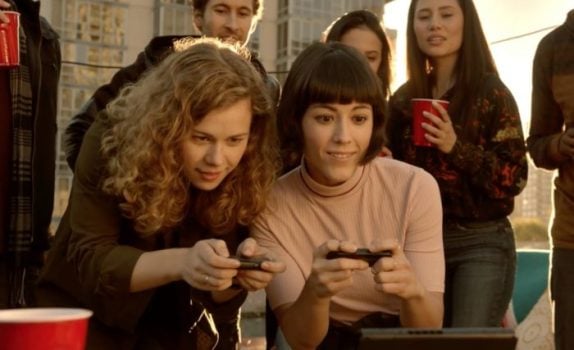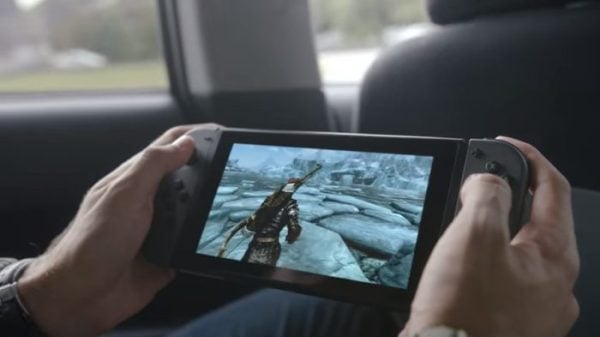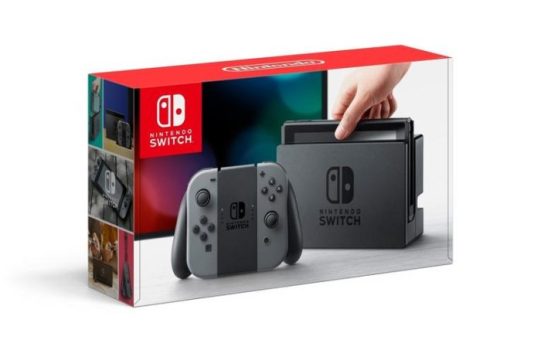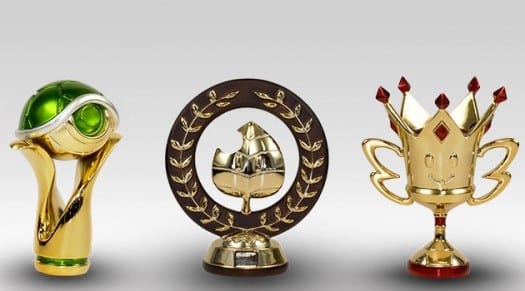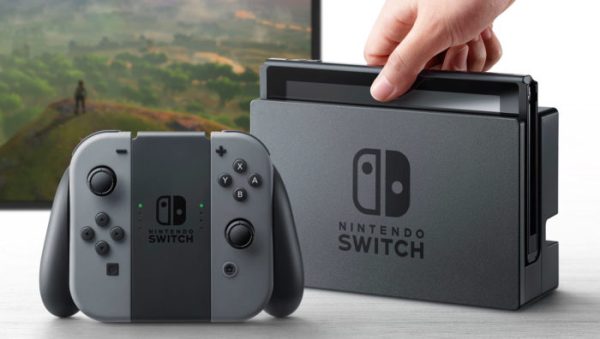No Pack-in Game
The Nintendo Switch is looking like an exciting new piece of technology, and Nintendo fans are already lining up to get their hands on this new home console/handheld hybrid. $300 is not too bad of a price, as it keeps the new hardware competitive. The only problem is that the price-tag doesn’t include anything that will allow you to actually test the hardware out.
The box won’t include a pack-in game of any sort, not even the perfect contender 1-2-Switch, a competitive, mini-game filled title that seems like it was made for demoing. Nintendo hasn’t even mentioned a demo cart, a free day one download, or anything else of that sort. You get the console and not much else; hopefully you have a few extra bucks so you can actually use the thing.
Joy-Con Charging
The Nintendo Switch’s actual controller is split up into two smaller controllers known as Joy-Con (L) and Joy-Con (R). They’re wireless, allowing you to use them while playing with the console in TV mode. You can even attach them to a special grip that comes with the console, for a more traditional controller experience.
Like with all wireless controllers, the Joy-Con batteries will eventually die, meaning you’ll have to charge them. Unfortunately, the only way to do that out of the box is to attach them to the tablet that is the core of the Nintendo Switch. So if you don’t want to play handheld, you’ll just have to stop playing completely.
But what about the grip, you ask? It surely must be able to charge the controllers. Unfortunately, it doesn’t. If you want one that does, however, you’ll have to cough up an extra $30.
There are no cables included, or anything else to make charging while playing easier, and that’s a shame. If you happen to forget to charge the night before and just want a quick game or two on your TV before work, you’re sadly out of luck.
Chat Will Require Your Phone
Nintendo is finally taking the online side of gaming seriously, and will offer a paid subscription service (though it will be free at launch and not become premium until later in 2017). The service will allow for online multiplayer, sales, free access to a monthly game, and an Online Lobby & Voice Chat app. That app, by the way, will not be on the console, but on your own smart device (whether it be a phone or tablet).
Basically, you’ll be paying to use your phone to talk to your friends and other people you play with, something you can already do with your phone — because it’s a phone.
While the price for the service hasn’t been locked in, it’s an odd decision, and there’s been no great reason for why the app can’t be placed on the portable Switch, which happens to include an audio jack perfect for a small headset. This is especially troubling for those who perhaps don’t have a smart device but like to chat in games.
Subscription Games are One-Month Trials
Since we’re on the topic of the online side of the Nintendo Switch, we may as well talk about another strange choice being made by the gaming giant. Sony and Microsoft provide ‘free’ games every month to active subscribers of their respective services. Nintendo is joining the club… sort of.
Every month, subscribers to the Nintendo Switch Online Service will receive one NES or SNES game to play. The catch is that the game is only yours to play for one month, after which you will have to pay for the game. While we’re not saying that Nintendo has to give us free games for the service to be a success, if you’re going to copy an approach that is successfully used by other platforms, do it right. Providing what is essentially a glorified demo isn’t really doing anyone any favors, and is hardly a way to reward a fan if that’s the intent of this service.
No Trophies and Achievements
While there is still time for Nintendo to come out and say “hey, we forgot to mention that the Switch will indeed have trophies you can earn in games,” the silence on the topic is telling for now. Microsoft was definitely onto something when the company released achievements for the Xbox 360. After seeing just how much players cared about them, Sony followed suit in 2008, and now millions of players are chasing platinum trophies left and right. Most thought that the Wii U would get something similar, but after it didn’t, hopeful eyes turned to the upcoming console.
They may sound trivial, and to many they are, but they add to replayability, and even lead some players to try games they may not have before, simply because they have easy achievements. As of the time of writing, there has still been no mention of anything even resembling trophies or achievements for the Switch. Hopefully they’ll be introduced in the online beta, so we’ll keep our fingers crossed.
Battery Life Is Pretty Low for Something So Focused on the Portable Aspect
Portable consoles are great, which is why millions of people have purchased a 3DS. The Nintendo Switch is trying to step things up a notch by offering a full console experience on the go.
Unfortunately, you shouldn’t expect to play for a long time while on the go. The Switch can last for up to six hours on a full charge, but that number drastically reduces to around two hours for certain games. The more graphically intense the title, the shorter the battery life. One example provided was that Breath of the Wild would run for “roughly three hours.” That’s not a whole lot if you’re dealing with binge-players, or if you’re planning on playing through a long flight.
Considering the trailers show a lot more on the move action than TV gameplay, it’s surprising that the battery doesn’t last much longer, even if it may be technologically difficult to increase.
Motion Controls… Again
We have no problem with motion controls. But, leading up to the reveal of the Switch, Nintendo stated that it would be a very different console, one fundamentally unlike the Wii and Wii U. Yet, early on in a recent reveal event that detailed pricing, release dates, and game lineups, the Switch seemed a bit too familiar.
The first chunk of the gameplay shown off revolved around motion controls, not a feature that many were excited for. After two gimmick-heavy consoles, many fans were looking for something a bit more traditional. Just a powerful, no frills way to play one of the most celebrated video game libraries in history. Yet we got to see ice cubes shaken in a virtual glass and watch people play quickdraw, or milk invisible cows.
Peripheral Prices Are Out of This World
The Nintendo Switch itself is not very expensive, but taking into account certain things like extra controllers and chargers, the price tally begins to rise rather quickly. After our hands-on preview, it became clear that the Joy-Con controllers aren’t very comfortable, especially for people with more adult-sized hands. The Pro Controller is certainly going to be a must for many owners, and since there’s no way to charge the controllers while playing unless you’re fine with the handheld mode, there’s another price tag for a charger. Unfortunately, these components cost quite a bit more than the competition. Check out the prices:
- Pro Controller – $69.99
- Joy-Con Set – $79.99
- Joy-Con (L) or Joy-Con (R) – $49.99
- Charging Grip – $29.99
- Dock (incase you want an extra) – $89.99
- Wheel (Set of 2) – $14.99
The controllers cost more than a standard DualShock 4 or Xbox One controller. And $30 is a steep price to pay when looking to charge while playing on your television. Heck, for the PS4 and Xbox One you just need to buy a matching USB cable, and if you happen to own an Android phone, you already have one. Not to mention, the consoles come with one.
These prices are pretty high, and when you tack that on the fact that the console doesn’t come with anything to play, they become even tougher to swallow.
Storage is Way Too Small
32GB is not a lot of storage room in this day and age. Games are only getting bigger, and the digital age is approaching. More and more players are getting their games through online marketplaces, skipping out on picking up physical media. This requires large amounts of storage to keep everything up and running.
The 32GB that the Nintendo Switch comes with is not even fully available to the user as some of it (an unspecified amount at the time of writing) is set aside for the system itself. So when you consider that The Legend of Zelda – a game that most day-one owners will have, because let’s be honest, what else are you really going to play? – will take up 13GB for those going the digital route, the terror of running out of space becomes very real. You can get a PS4 or an Xbox One right now for $300, each with 500GB of storage, 400+ of which is usable by the player. Launching in 2017 with not even 10% of that is a move that boggles the mind.
Where Is That Major Third-Party Support?
During the big Nintendo Switch Event we got to see quite a few games. Some of Nintendo’s usual third-party supporters came out with titles like Fire Emblem Warriors and a new Shin Megami Tensei game, which were well received but honestly sort of expected. Nintendo needed to show something major to prove it’s got the major third-parties – EA, Activision, Take-Two Interactive, Bethesda, etc. – in their corner. All they mustered up was Skyrim, a 2011 game that has released on five major platforms already. We’re not saying it’s a bad game (heck, I’ve purchased it three times already), but it didn’t exactly wow anyone.
Skyrim in a year that will see the release of a new Star Wars Battlefront, Mass Effect: Andromeda, Red Dead Redemption 2, and countless other huge releases seems pretty… average. It didn’t instill faith that everyone is in the console’s corner, and it certainly didn’t sway anyone looking for a multi-purpose machine, not just a box that plays exclusives.
Hopefully this is just the calm before the storm and third-party developers are waiting to spring a huge surprise on fans. But there’s no time like the present, especially when Nintendo needs to prove that the Switch is a real contender right now.

